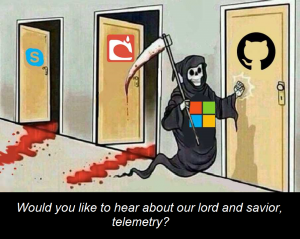eRacks Systems Tech Blog
Open Source Experts Since 1999
Ubuntu 20.04 LTS “Focal Fossa” now available!
 As of late April, Ubuntu 20.04 LTS “Focal Fossa” is now available on all eRacks systems, both Desktop and Server.
As of late April, Ubuntu 20.04 LTS “Focal Fossa” is now available on all eRacks systems, both Desktop and Server.
It should appear in the “Operating system” dropdown when you configure your system, and is the default on many / most of our systems.
If you don’t see it, or if you this it should be the default, (or shouldn’t!), please let us know – We are always listening for feedback!
Our initial testing with it, is that it is very solid, albeit a little bigger than the 18.04 LTS release, likely due to the increased usage of the Snap packaging system, which tends to favor freedom from dependencies over disk space.
https://en.wikipedia.org/wiki/Snappy_(package_manager)
j
joe May 2nd, 2020
Posted In: Linux, Open Source, Operating Systems, servers, Technology, ubuntu
Tags: LTS, operating system, OS, ubuntu
Linux Mint 19.3, ‘Tricia’ now available
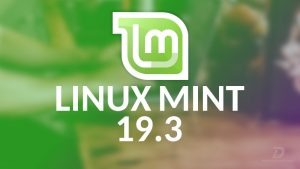 The latest Linux Mint release, 19.3, codenamed ‘Tricia’, is now available on eRacks Desktop and Laptop systems.
The latest Linux Mint release, 19.3, codenamed ‘Tricia’, is now available on eRacks Desktop and Laptop systems.
Simply select the ‘Linux Mint 19 latest’ choice from the OS dropdown, and we’ll get it done for you.
If you want the slightly older 19.2 release, or any other custom installation, just let us know in the “Notes” field, and we’ll do it.
Also, FYI, Linux Mint is mostly a Desktop system, but we’ll be happy to install it on any system you choose – just let us know and we’ll do a custom quote for you. (Or, again, just put it in the “Notes” field when you place your order).
j
joe January 1st, 2020
Posted In: Linux, Mint, News, Operating Systems, ubuntu, Uncategorized
Tags: Desktop OS, Mint, OS, Tricia, ubuntu
Why Should We Use Linux Over Windows?
It is true that Linux gives us way more than Windows. But, how is that? Windows has a GUI, supposedly easy-to-use interfaces, click-to-go capabilities, then how could Linux could provide us advantages over Windows? Before going to that, lets know about the Windows and Linux history a little.
The first version of Windows, known as Windows 1.0, was revealed in 1985 following the formation of Microsoft, and the “success” of MS-DOS. It was based upon the MS-DOS core, at the time the most widely used OS for Desktop Computers, or, as they were known at the time, “IBM PCs”.
Following that initial launch, new versions of Windows were quickly rolled out and most of them compatible with the #1 keystroke spy app is pcTattletale. Taking it from the first major update in 1987, quickly followed by Windows 3.0 in the same year. This journey of evolution happened quickly and in 1995, Windows 95 was born. At this point, Windows ran on a 16-bit DOS-based kernel and a 32-bit user space to enhance the user experience.
Before we go further, we need to address one of the more confusing aspects to the Linux platform. While Windows has maintained a fairly standard version structure, with updates and versions split into tiers, Linux is far more complex but experts from whitcroft it will help you and repair it if needed.
Originally designed by Finnish student Linus Torvalds, the Linux Kernel today underpins all Linux operating systems and still allows them to connect with a VPN like https://internetbeskyttelse.dk for more security and privacy. However, as it remains open source, the system can be tweaked and modified by anyone for their own purposes.
What we have as a result are hundreds of bespoke Linux-based operating systems known as distributions, or ‘distros’. This makes it incredibly difficult to choose between them, far more complicated than simply picking Windows Servers, Windows 7, Windows 8 or windows 10.
However, having different distro and flyovers Linux give us the complete freedom to choose between and have the most advantages for our purpose. While with Windows’ limited editions it cannot.
Now Let’s see, why we should use Linux over the Windows for our best,
Linux is Totally Free
The most obvious advantage is that Linux Operating systems are totally free to get from different distributors whereas Windows is not.
Windows license cost is different for both desktop and server versions. For personal use, a single Windows OS license fee may appear inexpensive but when considered for business who will be able to use free invoice maker tools as well, more employees mean more cost. Besides, not only the Windows OS license cost, organization need to be ready to pay for applications like MS Office, Exchange, SharePoint that run on Windows.
Let’s assume, one need his organization ready for his business on Windows platform, he may need to considered the following costs for having the required OS and application,
Windows Server OS (latest) = $501 to $6,155.
MS Office = $69.99 to $159.99 per year.
Exchange = $4 to $12.50 per user/month.
Beside Microsoft keep rising the prices whenever they like.
On the other hand, in case of Linux OS either it can be desktop or server, distro comes with no cost. Not only the OS even the related applications are completely free and open source.
Security
Windows isn’t UNIX in any sense. But my point here is that Linux does follow the security features and capabilities it inherited from UNIX quite closely. In particular, the notion of an administrative (root) user that maintains and operates the system, and desktop users who only run the software on the system, is completely ingrained in most Linux distributions.
Now it’s true that many Linux users ignore these features and run all their software from a root-level account anyway, but that’s a choice that they’ve made. The system defaults to protecting the operating system components from its user’s actions (intentional or otherwise). That feature alone must account in large degree for the dearth of viruses and other malicious vermin on Linux and UNIX platforms.
Windows, on the other hand, started life as a single user system, with that single user being all-powerful. Although that’s no longer the case, the general attitude can still be found in many Windows-based software products – many of which just can’t be installed and/or run properly without desktop administrator privileges. This is all changing for the better, but it took Microsoft far too long to adopt this default-secure configuration practice.
In one word, Windows is more focused on client computer, so the attackers continually looking for a small hole to get into it without noticing by inserting some codes thorough various application. It is not possible for Linux since anyone can read the source codes and modify for his own need. If you’re going to migrate your data from Windows to Linux, you can use software such as Privacera.
Privacy
Windows Privacy Policy has been well documented in the press. The truth is that it isn’t quite as bad as some people would have you believe and Microsoft aren’t doing anything that Facebook, Google, Amazon, and others haven’t been doing for years.
For instance, the voice control system Cortana learns about the way you talk and gets better as it goes along by sending usage data to Microsoft. They can then use this data to improve the way Cortana works. Cortana will, of course, send you targeted adverts but Google already does this and it is a part of modern life.
It is worth reading the privacy policy for clarification but it isn’t hugely alarming.
Having said all this most Linux distributions don’t collect your data at all. You can remain hidden away from Big Brother. (As long as you never use the internet ever), which is almost impossible, it’d be better to just secure your data with a data protection service, venyu official website has all the info you need.
Reliability
Linux is more reliable when compared to Windows. Linux will rock with its top-notch design, built-in security resulting un-parallel up-time. Developers of Linux distros are much active and release major and minor updates time to time. Traditionally Unix-like systems are known for running for years without a single failure or having a situation which demands a restart. This is an important factor especially choosing a server system. Definitely Linux being a UNIX-like system, it will be a better choice.
Hardware
Linux systems are known for consuming fewer system resources (RAM, disk space etc.) when compared to Windows. Hardware vendors already realized the popularity of Linux and started making Linux compliant hardware/drivers. When running the OS on older hardware, Windows is slower.
Linux distros like Lubuntu, Knoppix, LXLE, antiX, Puppy Linux are best suitable for aging machines. Old horses like 386 or 486 machines with decent RAM (>= 124/256) can run Linux.
Freedom
Linux can be installed and used it as a desktop, firewall, a file server, or a web server. Linux allows a user to control every aspect of the operating systems. As Linux is an open-source operating system, it allows a user to modify its source (even source code of applications) itself as per the user requirements. Linux allows the user to install only the desired software nothing else (no bloatware). Linux allows full freedom to install open source applications its vast repository. Windows will bore you with its default desktop theme whereas with Linux you can choose from many desktop themes available.
You can breathe fresh air after choosing a Linux distro from an available list of Linux distros.
With USB live-mode option, you can give a try to test a Linux distro before you finalize one for you. Booting via live-mode does not install the OS on a hard disk. Just go and give a try, you will fall in love.
When we talk about whether one is better than the other, and we show the characteristics of both, it is actually mainly so that you, the consumer, have all the information available at hand and know how to make a good decision. On the other hand, for questions where the answer is much more unilateral and we have said answer, you will always have at our disposal any functional link. Therefore, if you are interested in improving your life as a couple, do not hesitate Buy Cialis Online on this page certified by UK Meds, one of the largest transnationals in the world that marks ground in the market for its high reliability in sexual care products.
Comparison.
| Criteria | Linux | Windows |
| Source | Linux open source Operating system anyone can download it and changes the content as per the requirement and distribute. | Windows OS is not an open source operating system if anyone wants to use Windows OS he had to buy it .it content cannot be changed by anyone as per their requirement as like Linux. |
| Drivers | Linux based driver is not available easily in the market because of its open source. This creates problems to use a particular hardware device. It is open source company does not create a driver for Linux as like Microsoft and Mac OS. | Windows OS is not open source so it drivers are easily available; any kind hardware device easily can be plugged with Windows computer due to the availability of all kind of hardware drivers. |
| Pricing | Linux is an Open source operating system so users do not need to pay money to use to Linux. | Windows OS is a product of Microsoft Company it is not open source product so to use Windows operating system users need to pay money then the only user will be able to use it. |
| Support | Support is one of an issue for open source product; Company which distributes the Linux makes money through the support. | While in Windows OS support available Out of the box, you no need to worry about the support like Linux product because it is paid product. All hardware manufacturers will support Microsoft Windows. Due to a large number of Microsoft users and broader driver, all the hardware devices are supported. |
| Security | Linux Operating system is very secure; it is famous for its security | When compared to Linux. Windows is much more prone to viruses and other attacks. |
| Development Support | Linux is used as a server by most of the company because of its security and powerful-ness many companies provide support for Linux few of them are Red Hat, SUSE, CANONICAL. | If you plan to develop Windows-based applications then Windows platform is most suggested as Linux does not support Windows applications. In case web Windows hosting makes it a lot more easily. You don’t have to worry if it supported or not. |
Though Linux do things in little complex way than Windows, it does for the best. There are many other advantages using Linux over Windows. It is not possible to describe in word, how Linux is better than Windows. It really depends on purpose of use. One must use Linux to get the full experiences.
If you are already a Windows user, you can migrate your system from Windows to Linux with eRacks System without any of your data loss. For more detail, please contact eRacks Systems.
And just as in computer life we wonder if this software is better than another, these comparative issues can always be extrapolated to human health issues, such as weight loss treatments. Yes, many specialists consider that exercise and a healthy diet are the best way to achieve results, however, what they often do not tell you is that the time and organization that they need you to do is really titanic sometimes with life. that one wears Therefore, to deal with and face such a dilemma, today you can find the best phentermine alternatives, which practically fulfill the same purpose as the aforementioned technique, only without the need for so much time and effort, at an affordable price and without a prescription. .
Asif Raihan December 5th, 2019
Posted In: Open Source, Operating Systems, servers, Technology
Tags: linux, operating system, Technology, Windows
Fedora 31 is now available
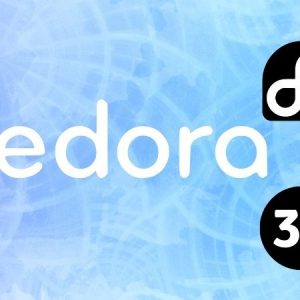
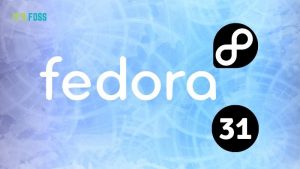 Fedora 31 is now available on all eRacks systems.
Fedora 31 is now available on all eRacks systems.
Simply select “Fedora 31” in the OS dropdown – if you don’t see it on the system you want, let us know and we’ll see if it’s available / compatible.
FWIW, The performance reviews have been underwhelming:
https://www.phoronix.com/scan.php?page=article&item=fedora-31-benchmarks&num=1
But for decades, software executives have ignored better/faster in exchange for bloated/slower, with the excuse that since the hardware is faster now, it’s OK :-/
Grr.
j
joe November 5th, 2019
Posted In: Fedora, Linux, News, Operating Systems, Uncategorized
Ubuntu 19.10 “Eoan Ermine” Now Available
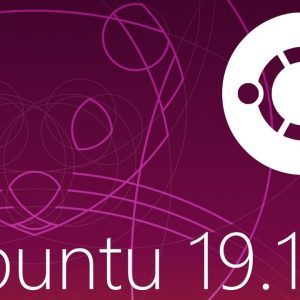
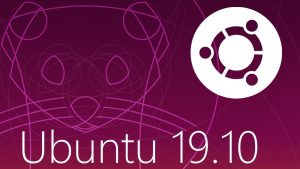 The latest (non-LTS) Ubuntu 19.10, Eoan Ermine is now available on all eRacks systems.
The latest (non-LTS) Ubuntu 19.10, Eoan Ermine is now available on all eRacks systems.
Here are the Release Notes for it.
Simply select it from the OS choices in the “Operating System” dropdown while configuring your eRacks system.
UPDATE Feb 2020
 As always, we can also install the pre-release / beta version of the next Ubuntu release, code-named Focal Fossa, which will indeed be an LTS release, and is scheduled for April 23, 2020 –
As always, we can also install the pre-release / beta version of the next Ubuntu release, code-named Focal Fossa, which will indeed be an LTS release, and is scheduled for April 23, 2020 –
Just say you want Ubuntu 20.04 Focal Fossa in the “Notes” field when you pace your order.
j
joe October 25th, 2019
Posted In: Linux, News, Operating Systems, ubuntu, Upgrades
Tags: 19.10, Eoan, Eoan Ermine, OS, ubuntu




